Another First World Problem
Warning to readers: Using a motorcycle for daily transportation in a northern winter climate is a metastasizing and symptomatic form of insanity. I know, because it happened to me. Two years ago, I put a not-yet-too-rusty car into storage during the winter months, and ever since then have been relying on a motorcycle for nearly all local winter transportation. The exception is a bicycle on studded tires. I live in northern Minnesota. This is insanity.
A few weeks ago, during a two-couple dinner with my brother-in-law Nick and our lovely wives, he asked if I’d been riding lately. Nick isn’t a motorcyclist and I think he might have thought he would be teasing me since it was mid-January and zero degrees outside. I smiled and told him I’d been riding for all daily transportation all winter for the past two years and not using a car. His face went wide-eyed in surprise for a second, then after a few moments of silent thought he replied with some emphasis: "You'll break your hip!"
What immediately came to mind was the nostalgic holiday movie ‘A Christmas Story’ in which a cute kid named Ralphie desperately wants Santa to bring him a BB gun, but all the grownups keep saying: “You’ll shoot your eye out, Kid!”
The insanity of winter transportation motorcycling obviously varies from location to location and winter to winter. Larger cities requiring longer-distance freeway-speed riding are more complicated for this kind of riding than small towns and villages featuring shorter distances and lower speeds. Here in Duluth, Minnesota, winter transportation riding means: A) slippery roads amidst sometimes impatient and unsympathetic traffic, and: B) breathing and tasting lots and lots of filthy brown road-salt-created mist if you ride too close behind any car or truck for more than a few seconds, and C) navigating occasional deepish snow piled up in big snowbanks, and D) sometimes riding across rock hard ice and tire-rutted roads covered with packed-down snow, and E) fairly regularly doing all this in very low temps and F) in the dark. This is insanity pure and simple.
How does one contract this version of crazy? Same as with most other maladies: Slowly at first, then all at once. Since childhood, I’ve enjoyed pedaling a bicycle. About twenty years ago, I started winter pedaling using a second set of studded tire ‘winter wheels’ I’d made for my bicycle. The descent into madness had begun.
 |
 |
About six years ago, I upgraded to an eBike which soon was equipped with its own set of studded tire ‘winter wheels’. This eBike is black. It now has about 7,000 miles behind it, alternating with my motorcycle and regular bicycle as daily transportation options. It is an ‘early’ mid-low-end model: Made-in-China, 37-volt battery, 500-watt mid-mount motor, and, like IKEA furniture, it came flat-packed inside a big cardboard box. Assembly was easy, durability has only been fair. Winters can be hard on equipment. Are you sensing a pattern?
The eBike is now on its 2nd battery, 2nd motor, and 2nd controller. I’ve also worn out a set of brake pads, two drive chains, one derailleur, one or two front chain rings, one or two rear ‘clusters’, and a few other smaller items -- but thankfully I have been able to handle all the necessary maintenance and service myself, with one exception: This bike’s aluminum frame broke right where the seat post connects to the top tube. The first aluminum welder’s repair job was crappy and after only a week or two needed to be re-welded by a better welder. The second weld was a lot nicer, but after a year that one developed a hairline crack so the second welder re-welded his work and added a small aluminum gusset which (with a different and longer seat post) was the permanent solution. The insanity was deepening.
 |
 |
eBike Sidebar 1: If you are considering buying a similar eBike (?) I’ve made three important upgrades to mine: 1.) A much larger chainring on the crank - eight or ten more teeth. That is a lot, and though I’m not a particularly strong pedaler, the big chainring helps me comfortably stay in a 20-23mph speed range on level ground (with no wind). The stock chainring limited my comfortable maximum speed to the 17-19mph range. Note: Today’s high-end eBikes all seem to come with 48v or higher electrical systems turning 750-1500W motors and these machines will easily cruise across a level road at 30+ mph without modification. For comparison, any regular pedal-only bike crossing level ground being powered by an average rider is good for somewhere in the 10-14mph range without unusual effort. 2.) A small home-fabricated chain guide using pieces of an aftermarket chain guide intended for mountain bikes. This prevents the chain from accidentally derailing after hitting a curb or similar bump at speed. 3.) For non-winter use the original semi-knobby mountain bike-style tires were replaced with smooth, quiet, and noticeably faster pavement tires which also provided a lot more cornering grip.
eBike Sidebar 2: I’m hoping eBikes will eventually become gateway drugs influencing a few owners of them to eventually purchase small transportation-suitable street motorcycles. It is super cool that the latest version of the Honda Cub, and many other small ICE bikes, are now coming with fuel Injection, anti-lock brakes, and exhaust catalysts in their mufflers. This is a strong signal many smart business people are betting with real money that bikes like the Cub will be an integral part of worldwide personal transportation well into the foreseeable future.
My own winter motorcycle transportation nonsense first began seven years ago during the winter of 2017-18 when the Zero electric motorcycle company lent Aerostich one of their then-new electric motorcycles to research how they’d perform under wintery conditions. Those experiences are chronicled here. Soon after that experiment ended the non-riding parts of my life became filled with commitments and activities (marriage, buying a home, and moving, etc) so developing a winter motorcycle transportation solution was not an option. But eventually, new daily routines became established enough to allow old thoughts about possible all-winter motorcycle use to grow. Slowly at first, then all at once, as the old saying goes.
A typical commute from home to Aerostich is 5.5 miles each way, all on surface streets, and if some errands (groceries, pharmacy, hardware store, etc) are involved one-way distances only roughly double, so this has never been about staying warm. The short distances mean being outside only fifteen or twenty minutes at a time. The challenge is having an ICE moto which will start semi-dependably at -5ºF (-20ºC) after a four-hour or longer cold-soak. Insanity.
My regular ‘riding-season’ bike won’t do that. Not even close. It is carbureted and uses an ‘enrichment circuit’ (versus a ‘choke’) for cold starting. Without re-jetting such systems are ineffective in seriously cold temps. And re-jetting seasonally is complicated because this bike is a ‘dual sport’ type and its carburetor is buried within a narrow compact frame. Changing jets would be a time-consuming job twice a year. No, thank you. Regardless, three winters ago I did try using that bike on winter-studded tires* which is how I learned that without re-jetting it would not start well enough.
Most roads around here are plowed and salted aggressively (and stupidly, this community being adjacent to fresh water Lake Superior, and for several other reasons) so most streets are easily and safely winter-rideable on all but on a few of the larger snowfall days. Fortunately, I’m able to work from home during those very few serious snowstorms.
Geezer sidebar: When I was a kid snow removal here was neither quick nor complete. Back in those days I walked eleven miles to school through four feet of snow at minus thirty, every day, uphill both ways. Did homework by candlelight. Etc.

The only bike I found which combined an ICE-engined bike’s lightness + fuel injection for better low temp starting + a very low saddle height, was a lightly used 2019 Suzuki VanVan 200. This is a fru-fru-retro-styled sixteen-horsepower air-cooled FI dual-sport ‘beach’ type bike with fat tires, looking somewhat like the better-known but-not-fuel-injected Yamaha TW 200. VanVan’s sold poorly here so were only offered to the American market for a couple of years though they are still available elsewhere. Top speed = 55-60mph, which is just enough to handle surface street city and suburban traffic. Unfortunately, last winter was record-warm and record-snowless here so the VanVan never got seriously tested, but it did work well enough as a fairly low-temperature starter to be encouraging.
Modifying this machine for winter use had only one goal: Make it as winter-compatible as possible with the minimum amount of work. Below are the changes that mattered most, not listed in order of importance:
- Studding the tires
- Siping the tread blocks of the tires
- Adding an aftermarket center stand
- Using painter's tape to cover the oil cooler
- Adding homemade fabric fork gaiters to protect the fork tubes from fork-seal-destroying road salt mist
- Adding heated grips
 |
 |
 |
With the help of a patient friend named Paul, who is a super-talented machinist/fabricator/motorcycle restorer, we made a crude (only 50-watt) tire siping tool, which allowed me to sipe the VanVan’s tires to complement its short screwed-in carbide-tipped tire studs. Very tedious.** Deepening Insanity.
This has been a quixotic effort, but it’s also been fun. And so far both hips are still intact. The most interesting result has been the range and variety of looks and occasional comments from people inside frosty-windowed cars when they observe me motorcycling, or walking through a grocery store carrying a helmet while wearing an oversized (and winter-road-dirty) Aerostich R-3.
The ambient temperature influences people’s reactions in an amusing way. If the temperature is up in the teens (+15-20ºf, -9.5 to -6.6ºc) or a little higher, people provide roughly half a dozen affirming, positive waves and thumbs-ups spread across a typical five-to-ten-mile route. Yesterday some guy driving a commercial work van even rolled down his window after we’d both stopped next to each other at a traffic signal and enthusiastically yelled “Hardcore!”. I replied with a smile and a silent thumbs-up. I’d like to imagine some of this encouragement comes from fellow motorcyclists patiently waiting for spring who very deeply are missing riding.
But at much lower temperatures witness reactions change noticeably. Nobody smiles or waves. It’s like suddenly becoming a dangerous lunatic. We humans are an ultra-tribal species. Whenever someone steps a little too far outside a tribe’s wheelhouse, they are not treated well. Heated automobile users are a tribe. At ten degrees F (-12ºc) or lower, I do look certifiably nuts riding a motorcycle. My stupidity is obvious and disturbing to nearly everyone else on the road.
Insanity.
Be careful out there.
Mr. Subjective, January 2025
*Three winters ago on the DRZ 400S I tried studding and siping a pair of ‘gummy’ rubber compound non-DOT observed trials tires which offered what seemed like a good rubber durometer for cold weather, but the sidewalls on those tires were so thin I was always afraid of getting a flat, which would mean leaving the bike and getting a vehicle to haul it to a warm garage to repair the damage. In hindsight mounting those tires on the Suzuki was a stupid and risky experiment. Besides them being scary soft, they were made only for low-speed use on bikes weighing half as much as the DRZ. But with them, I learned even with carbide studs the DRZ was too tall for confident use on icy snowy streets, and it did not like to start on the colder days, which are an inseparable part of winter here.
**A 250-watt version is in the works.




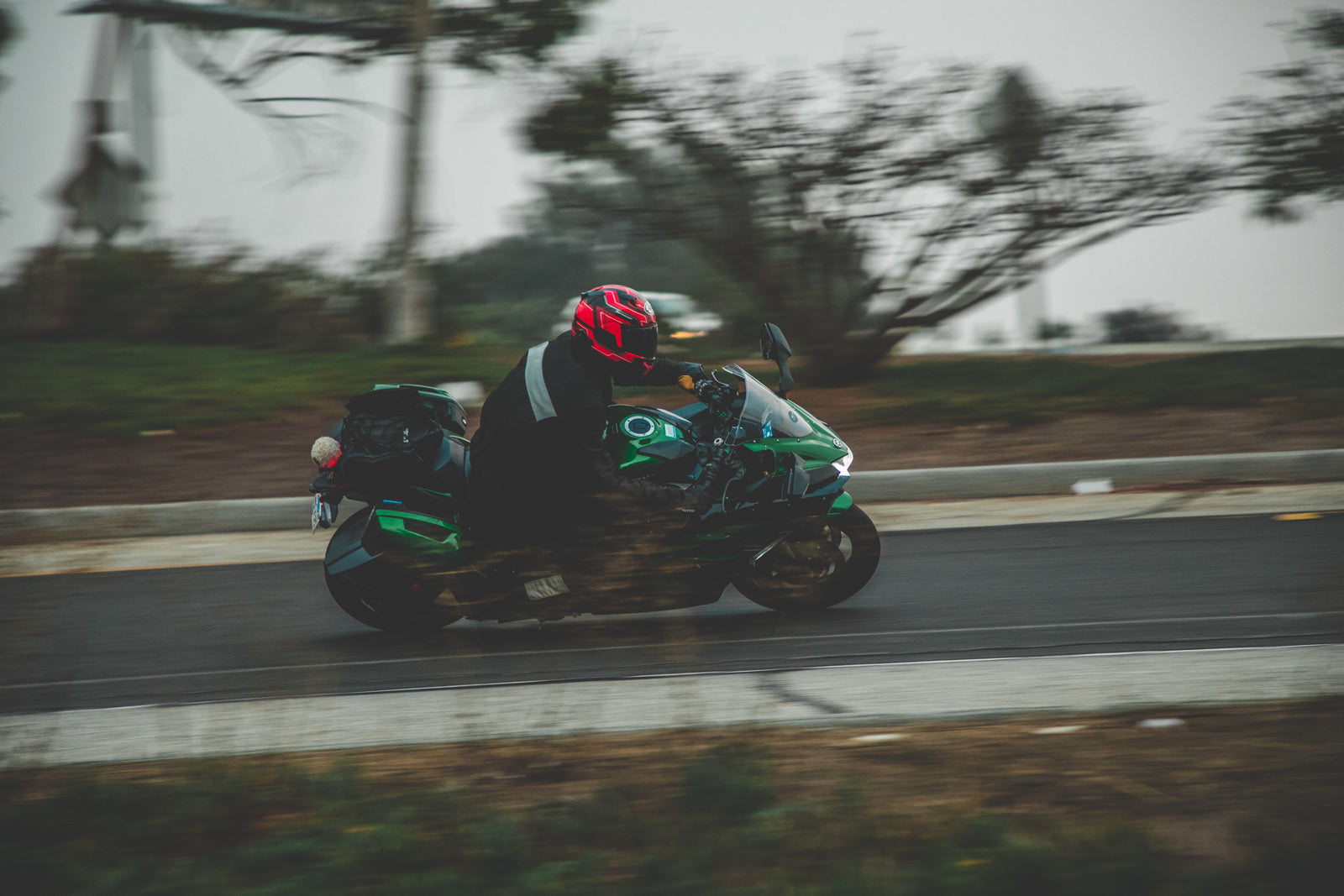
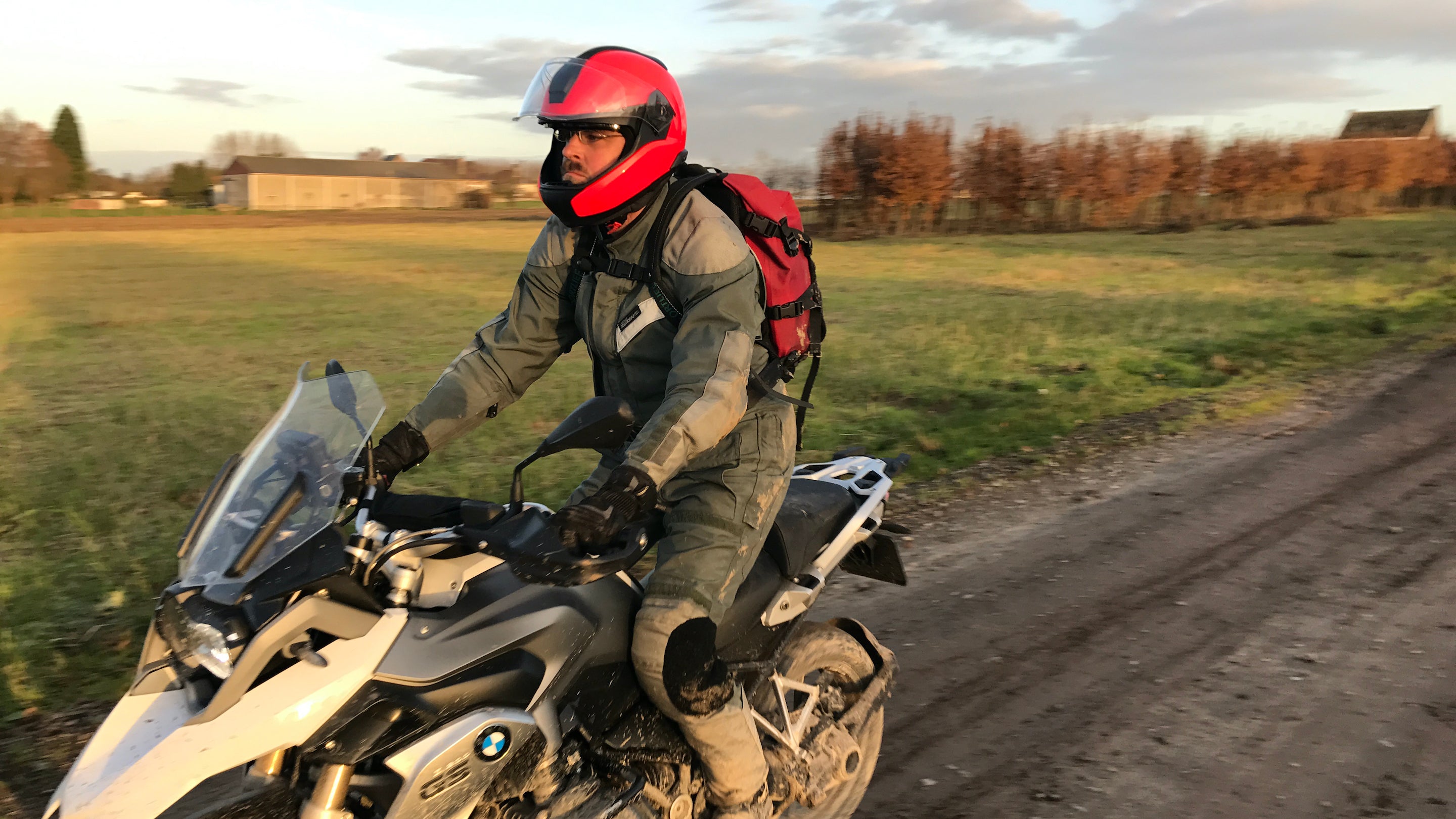
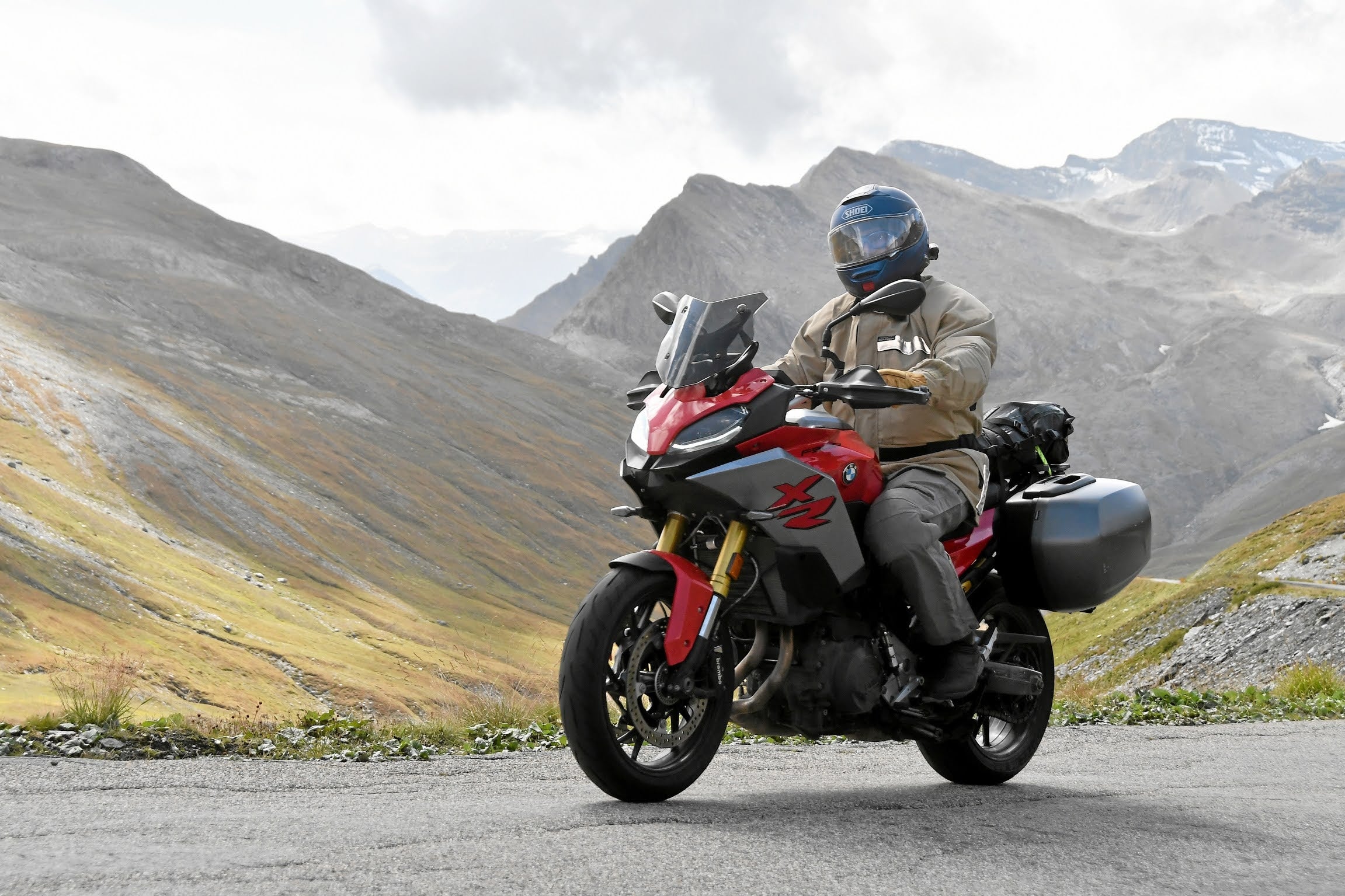
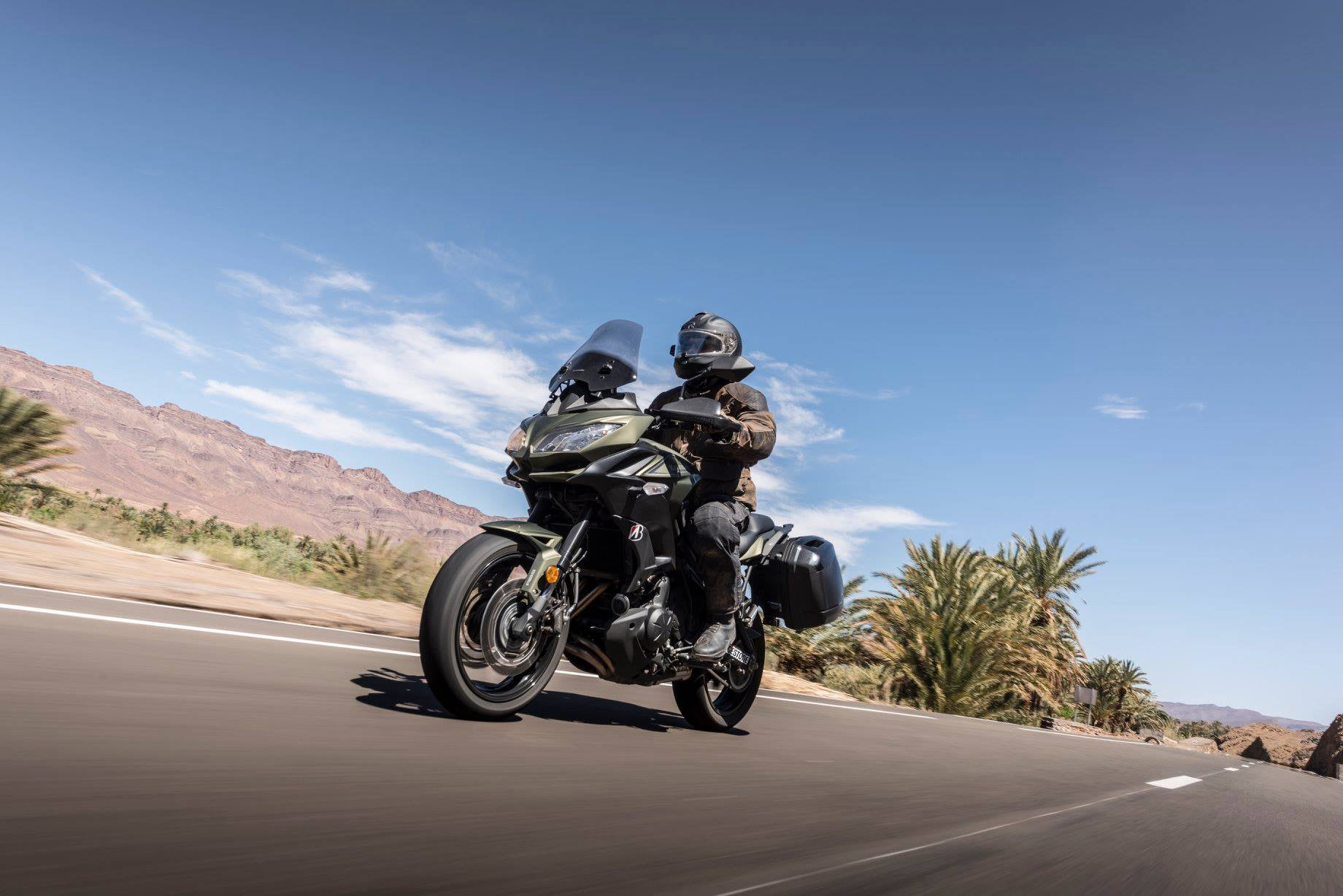
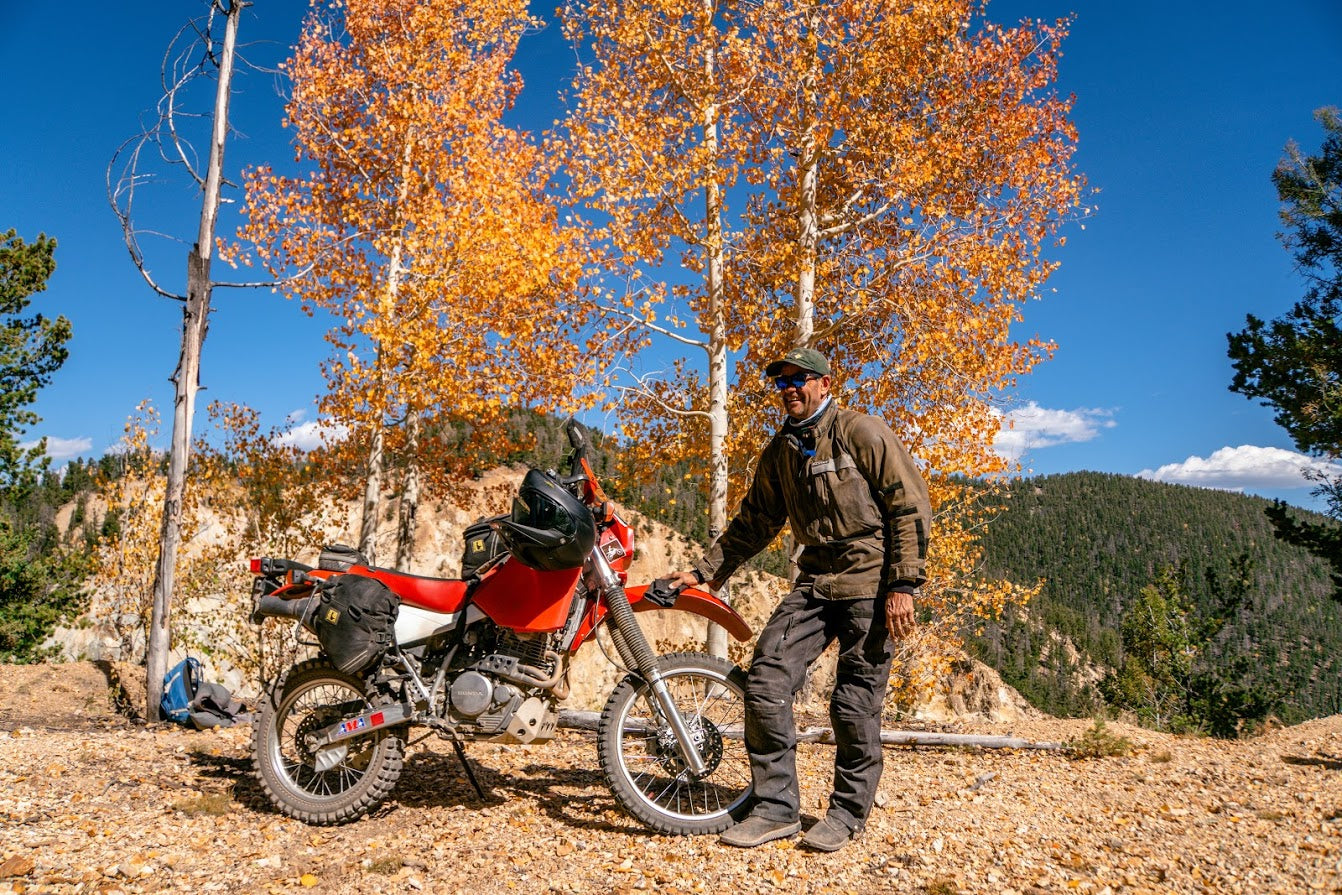
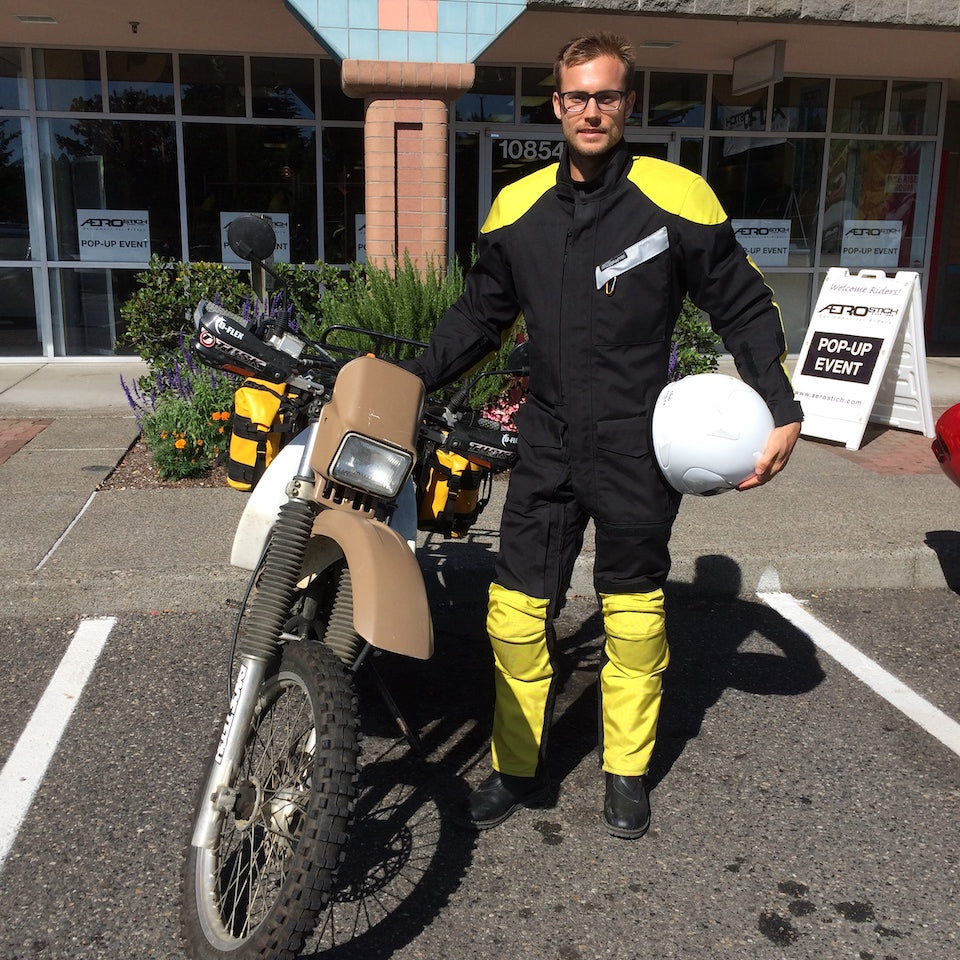







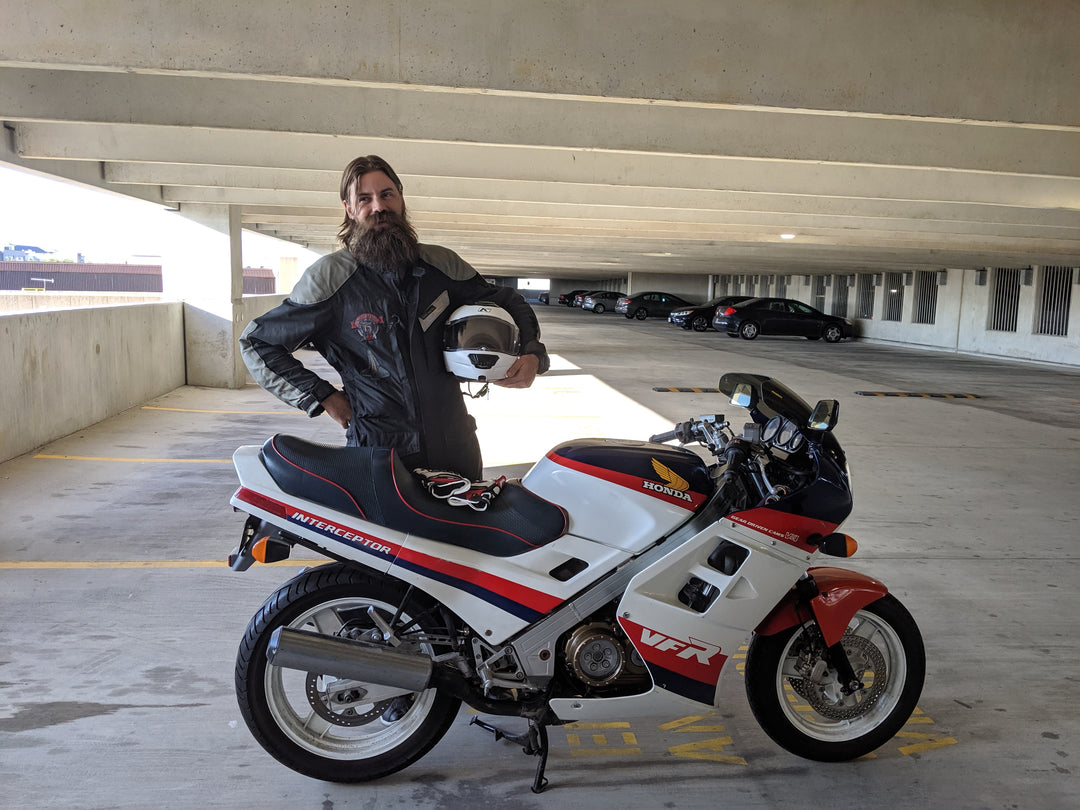
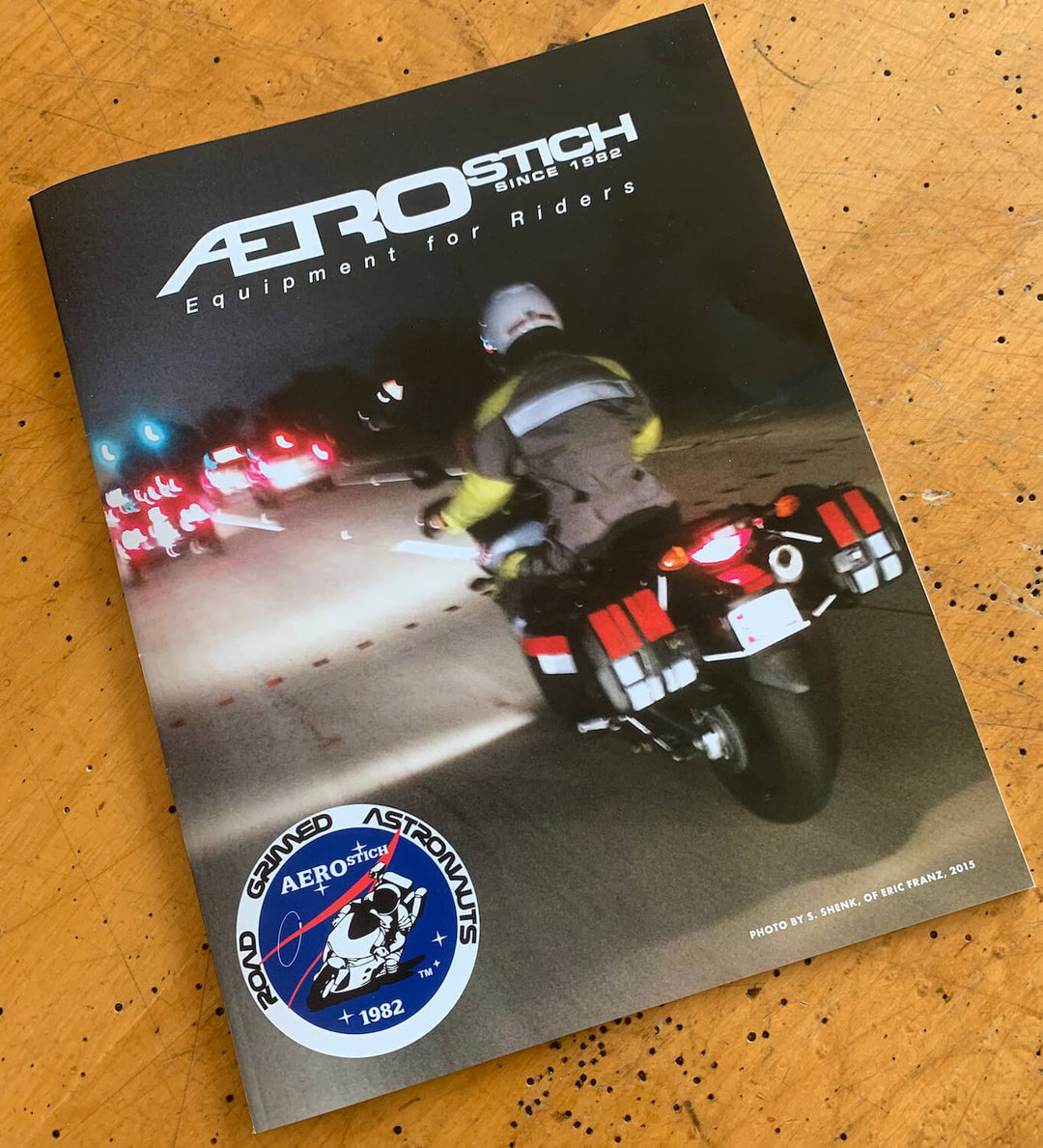
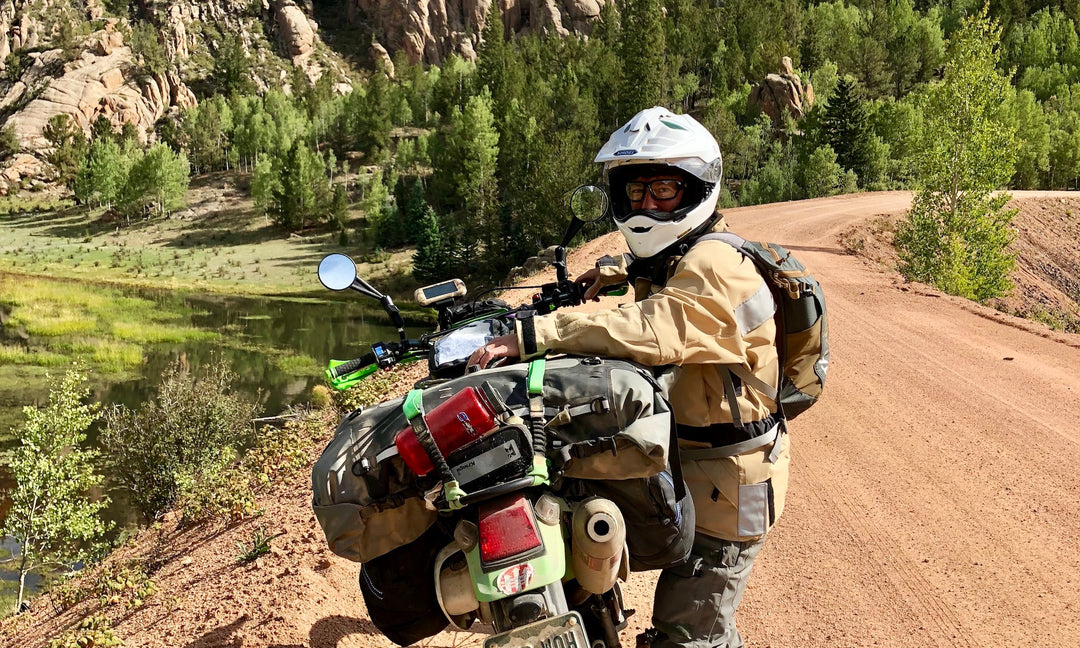
Retired now, I used to commute to work almost every day on a Vespa. Like you, my commute was just over five miles of city streets, mine in Southern Minnesota with a good size hill. I could walk it in less than 45 minutes but scootering was much more fun! I had a nice P125 for warm weather but swapped to a beat-to-hell 1964 Vespa 125 every Fall as soon as the first round of road salt hit the streets. Unlike you my Winter Beater started in any weather, with my personal record being -24F. Started on the second kick. I threatened to put on studded tires but never did, instead commuting by foot for the 5-10 days per year that it was just too snowy to ride on 8 inch street tires.
That little ’64 still sits in the garage waiting for me to get off my butt and go for a Winter ride.
My hats off to you. True die yards are few and far between. In the 70’s good weather would see me on my Moto Guzzi ElDorado police special. Crappy snowy weather I would be on a Honda SL125. Light and easy to slide in the snow. Once a local police officer pulled up next to me in the snow and asked why I was riding a motorcycle out here. He had chains on the police cruiser. I said I was just out having fun. Left him in the dust when the light turned green. He actually became a friend. As I tell my coworkers when they look at me, there’s no such thing as bad weather, just bad gear!
My winter ride is a 2008 Ural gear up I bought new. My work commute is 10 miles each way twice a day, I drive school buses so back & forth for am & pm routes. I live in sw Ohio so not horrible weather but the last 6 weeks have been as bad as weve had in years
Despite many days of low temp riding in NYC, I recently attempted taking an Africa Twin out in heavy snow on unplowed roads and learned—twice—that ABS is not active on the rear wheel below 10 mph and without studded tires, it is quite challenging to lift up that bike when the wheels are sliding along the road surface. Great article and inspiration to keep trying new techniques to keep the bike rolling as long as possible throughout the year.
I like my Ural for the winter.
Leave a comment